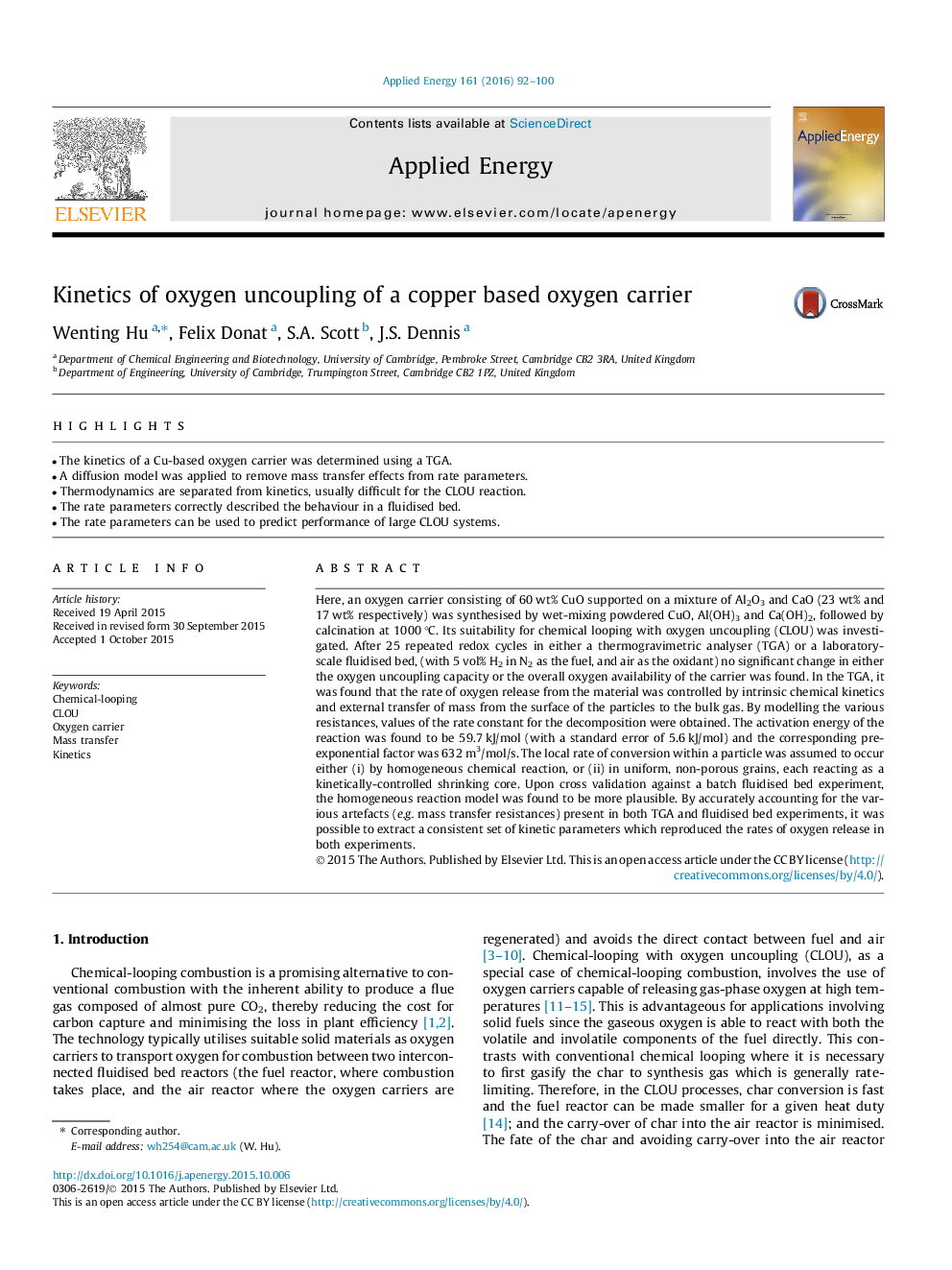| Article ID | Journal | Published Year | Pages | File Type |
|---|---|---|---|---|
| 6684936 | Applied Energy | 2016 | 9 Pages |
Abstract
Here, an oxygen carrier consisting of 60 wt% CuO supported on a mixture of Al2O3 and CaO (23 wt% and 17 wt% respectively) was synthesised by wet-mixing powdered CuO, Al(OH)3 and Ca(OH)2, followed by calcination at 1000 °C. Its suitability for chemical looping with oxygen uncoupling (CLOU) was investigated. After 25 repeated redox cycles in either a thermogravimetric analyser (TGA) or a laboratory-scale fluidised bed, (with 5 vol% H2 in N2 as the fuel, and air as the oxidant) no significant change in either the oxygen uncoupling capacity or the overall oxygen availability of the carrier was found. In the TGA, it was found that the rate of oxygen release from the material was controlled by intrinsic chemical kinetics and external transfer of mass from the surface of the particles to the bulk gas. By modelling the various resistances, values of the rate constant for the decomposition were obtained. The activation energy of the reaction was found to be 59.7 kJ/mol (with a standard error of 5.6 kJ/mol) and the corresponding pre-exponential factor was 632 m3/mol/s. The local rate of conversion within a particle was assumed to occur either (i) by homogeneous chemical reaction, or (ii) in uniform, non-porous grains, each reacting as a kinetically-controlled shrinking core. Upon cross validation against a batch fluidised bed experiment, the homogeneous reaction model was found to be more plausible. By accurately accounting for the various artefacts (e.g. mass transfer resistances) present in both TGA and fluidised bed experiments, it was possible to extract a consistent set of kinetic parameters which reproduced the rates of oxygen release in both experiments.
Related Topics
Physical Sciences and Engineering
Energy
Energy Engineering and Power Technology
Authors
Wenting Hu, Felix Donat, S.A. Scott, J.S. Dennis,
